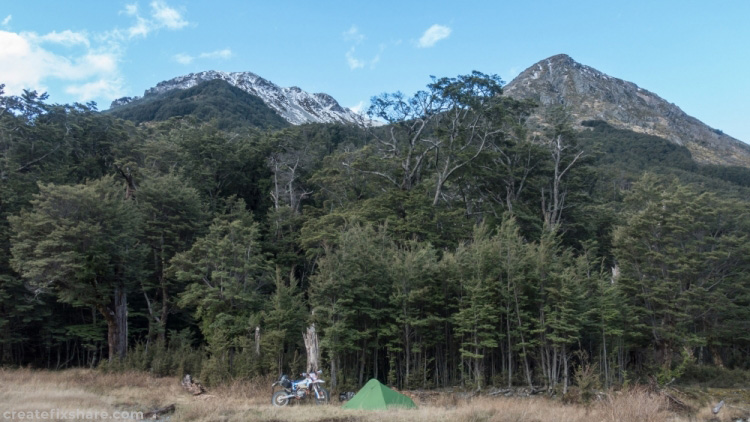Choosing the Best Tent for Adventure Riding
Having the right tent when out adventure riding will make your riding and camping trips enjoyable, however having the wrong tent can make your riding and camping trips seriously unpleasant! This article runs through some of the key points for choosing the right tent for adventure riding to make your riding and camping trips as comfortable as possible.
The information is based on my personal experiences over the last decade of riding and camping all four seasons in some of New Zealand’s most challenging weather conditions.
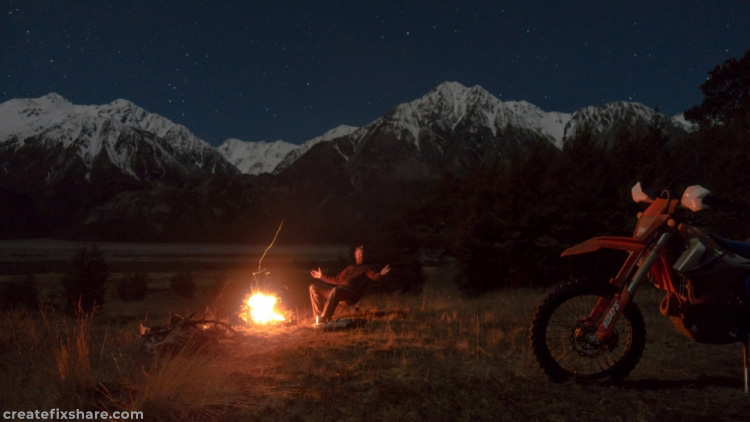
Adventure Riding Tent Floor Size
For the compact tents that are most suitable for adventure riding, manufacturers normally build these tents as small as possible to keep the weight down. When you look at the actual floor size of a two-person tent for example, the floor size is suited to fit two bodies sleeping side by side. That's pretty much it! Most compact tents assume you will be storing your gear in the vestibule area of your tent; i.e. the space between the tent fly and the outer wall of the tent.
One of the key deciders for floor size is if you want to store your riding gear inside your tent, or in the vestibule area of your tent. Personally I like to keep my riding gear inside the tent. If that is your preference too, then you'll need to look at a tent with an extra person of floor space for gear storage. So, if the tent is just for you and you want to store your riding gear inside your tent, you’ll want to be looking at a two-person tent. If the tent is for you and a partner, then you'll want to be looking at a three-person tent – or perhaps a four-person tent if you are carrying lots of gear.
If you decide to store your riding gear in the vestibule area, be sure to carefully check the vestibule size. For some tents, the vestibule area will only cater for a hiker that typically has minimal gear. An adventure rider’s full kit however can take up quite a bit of space.
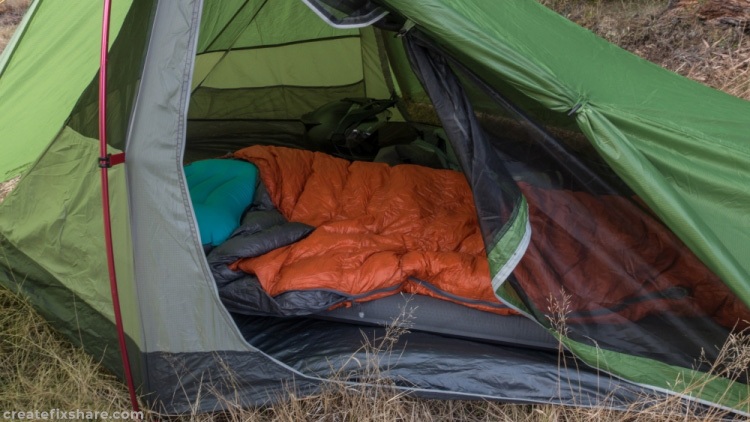
Headroom of an Adventure Riding Tent
If camping comfort is important to you then you will want a tent with a reasonable amount of headroom. This makes it so much easier to move around inside the tent, pack/unpack your gear, get dressed/undressed and sit in the front of the tent by the opening to cook food on a rainy day.
While this can vary from tent to tent, generally, most compact 2 person tents that are suitable to adventure riders won't have enormous amounts of headroom, but will have enough to allow you to sit up and get dressed.
Most compact 1 person tents that are suitable to adventure riders will have less headroom than a 2 person tent and it is often not possible to sit up and get dressed.
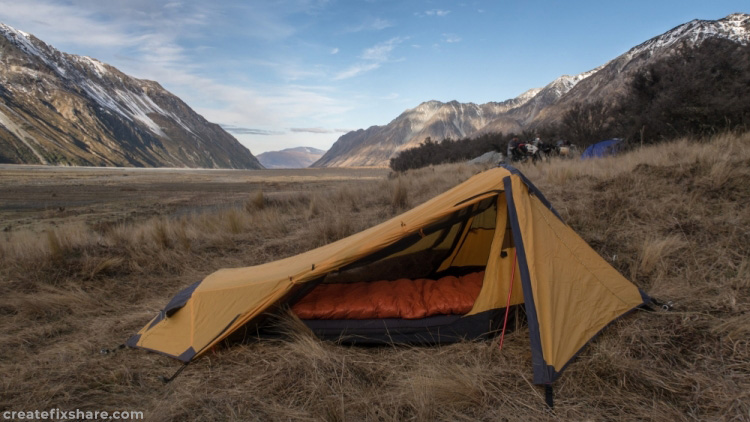
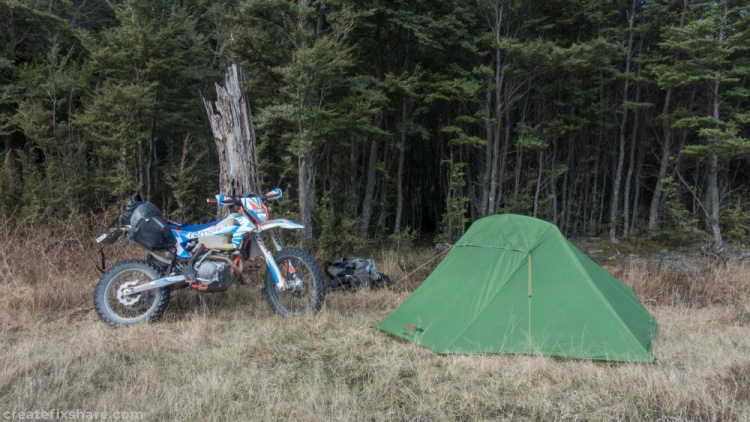
Adventure Riding Tent Weight
There are a number of tents on the market that are spacious and have ample headroom. However many of these will be recreation camping tents that are not specifically designed to be lightweight. Some of these 2 person tents can be 5 kg or more in weight which is exceptionally heavy when compared to a compact tent.
The term “compact tent” is used loosely as tent manufacturers will use other terms such as lightweight tents, ultralight weight tents, backpacking tents, tramping tents, expedition tents and so on.
Manufacturers of compact tents aim to keep weight as low as possible and do a pretty remarkable job. While weights can vary considerably, the typical weight of a medium priced, one-person, compact tent normally ranges from 1.2 kg to 2.2 kg. The typical weight of a medium priced, two-person, compact tent normally ranges from 1.4 kg to 2.6 kg.
If you are prepared to pay for a top end tent then the weight figures above can be reduced. As an example Terra Nova’s Voyager Ultra 2 two-person tent weighs only 1.05 kg. This tent will however set you back over $2,000 USD. Price is a big factor when it comes to weight due to the high quality lightweight materials being so expensive.
Make sure you are comparing apples with apples when comparing tent weights. A 4 season tent is built tough to withstand weather abuse all year round so they are typically heavier than a 3 season tent. More on this below.
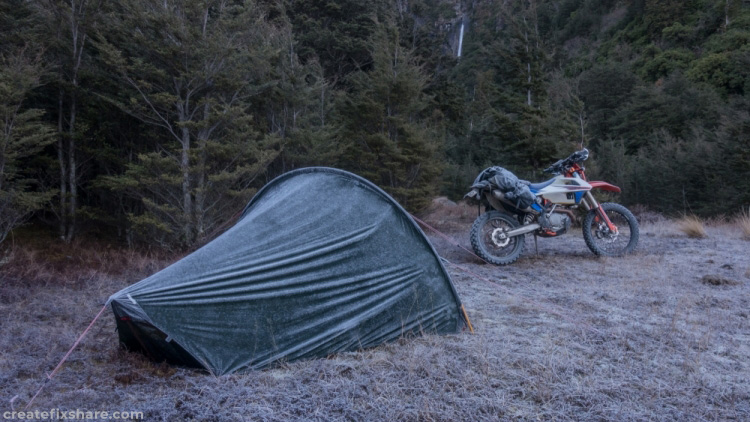
Packed Size of an Adventure Riding Tent
The packed size of a tent can be important especially if you have a particular place you need to pack the tent on your bike. The main variable that affects packed size is the pole length. Some tents have less pole sections meaning the overall packed length of one tent can be longer than another. Normally most tents will have a similar cubic size, it will just be the width and length that varies.
The goal is to find a tent with a packed size that best suits the packing a location on your bike.
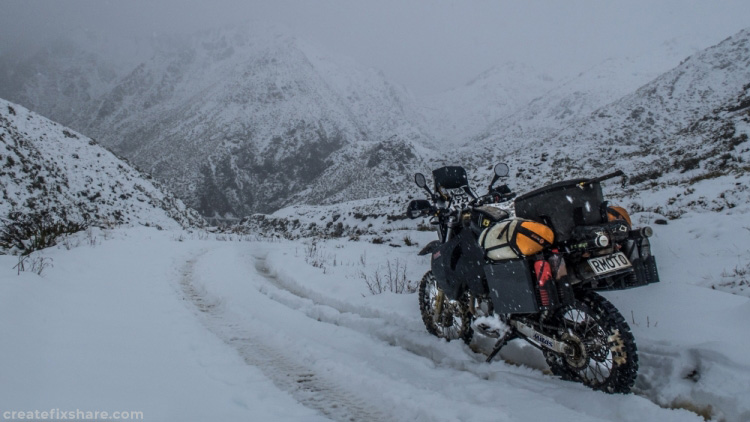
Adventure Riding Tent Season Rating
There are really only two important season ratings to consider when buying a tent for adventure riding; 3 season or 4 season.
A 4 season tent is designed to be bullet-proof all year round. They are designed to handle prolonged rain and strong winds. 4 season tents are generally slightly heavier than a 3 season tent as they designed to handle more serious abuse from Mother Nature.
A 3 season tent will be lighter than a 4 season tent and often have better ventilation due to it most commonly being used in the warmer months. Commonly the outer fly will not come all the way down to the ground like you see on most 4 season tents. A quality built 3 season tent can take punishment and can be a good option for adventure riding however, if you are going to be pushing the limits with where you plan to camp then a 4 season will likely be a better option for you. A good example of this is the snowline. If you plan to camp around the snowline, ideally you’ll want to be looking at a 4 season tent.
Adventure Tent Quality
I have experienced a number of storms when our riding and camping. On one particular riding trip up in the New Zealand High Country, a storm picked up and the wind screamed down the valley with vicious force for over 7 hours through the night. I could have sworn I was about to be picked up and blown away! While I didn't get much sleep that night, the quality tent I was in held up and all was well.
In locations where the weather can be changeable and volatile, it can often make short work of tearing apart a cheap low-quality tent. Taking a cheap $50 Walmart tent out into locations with volatile weather is asking for trouble.
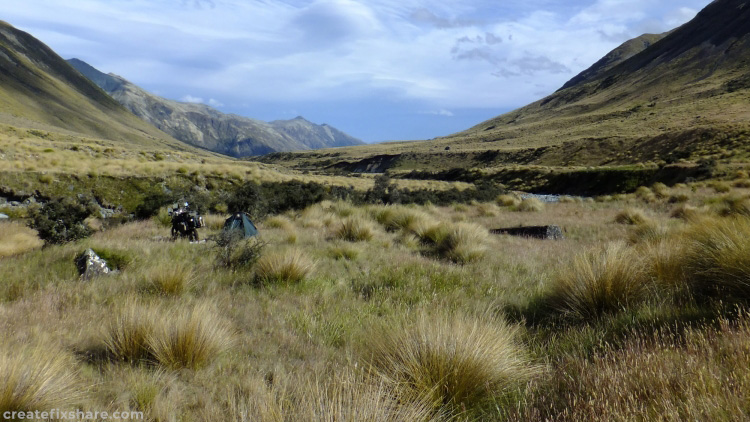
Recommendations for the Best Adventure Riding Tents
Because everyone’s take on adventure riding is so different, every rider will have different needs when it comes to buying the right tent. My only main recommendation is try to avoid the cheap tents, spend as much as you can afford and buy the best tent you can. You will never regret buying quality. One day, if you do get caught out in a storm, you will be so glad you have a tent that will withstand the punishment, keep you dry, warm and safe.
